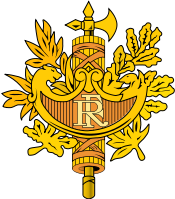The First French Revolution

Following the age of Enlightenment and the scientific revolution, new philosophies emerged that broke down systems of traditional authority. Religious organizations no longer had the same authority they once had, and people were also beginnning to question the models of absolute monarchy and the role of the State. In 1776, Colonists in America lit the fuse for a revolution against the British, leading to the establishment of the United States, the formulation of a constitutional republic rather than a divine monarchy, and a complete separation of Church and State. Around this time, still under the Bourbon dynasty, French society suffered from major social and political stagnation. The class system was unfair and unruly, many people starving; constant wars with the British were costing lives and money; the government of France was in massive debt. More and more, French people, particularly the peasants, were beginning to grow fed up. Inspired by Enlightenment thinkers and their American counterparts, the Third Estate (comprised mostly of peasants) broke away from the Estates-General, and signed the Tennis Court Oath, an agreement binding them together and promising to continue meeting until a constitution for the Kingdom of France was drafted and implemented. This was the most peaceful phase of the revolution. Depicted above is an artistic representation of the Tennis Court Oath by Auguste Couder in 1848.

Celebrated on the 14th of July every year in France is Bastille day. On this day in history, French insurgents stormed the prison of Bastille, freeing the prisoners, stealing weapons, and killing guards as well as the governor during the process. The revolution was now in full swing, and chaos swept across the nation. Depicted above is the Storming of the Bastille painted by an anonymous artist. It was after this period that the revolution became violent and many people were killed, many of them innocent lives.
